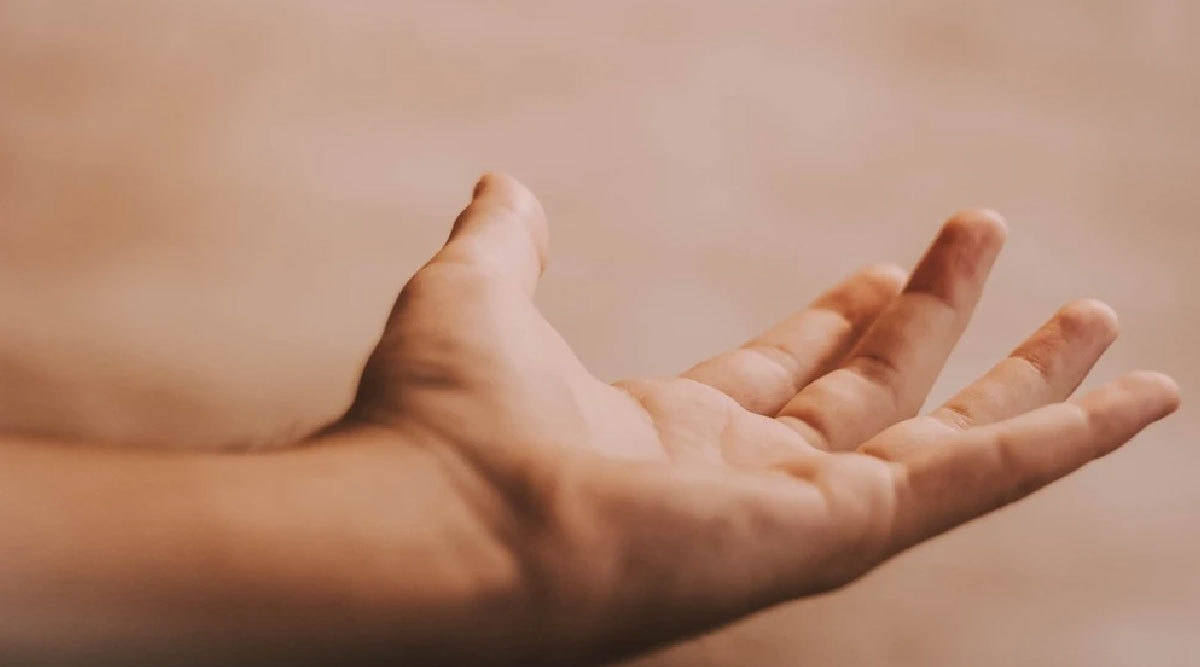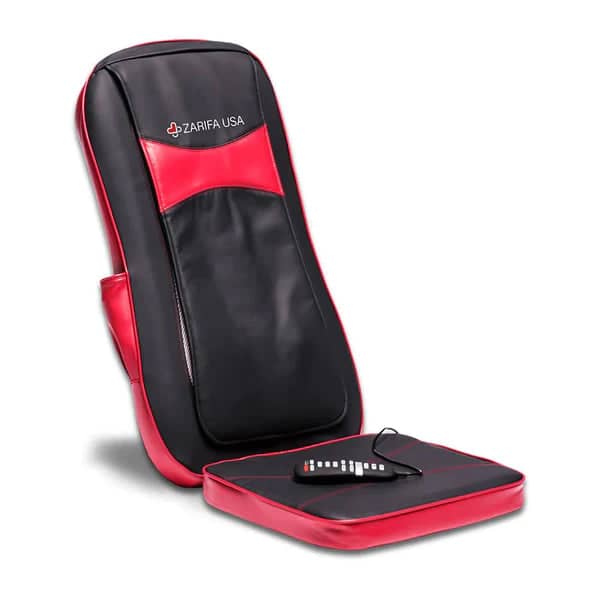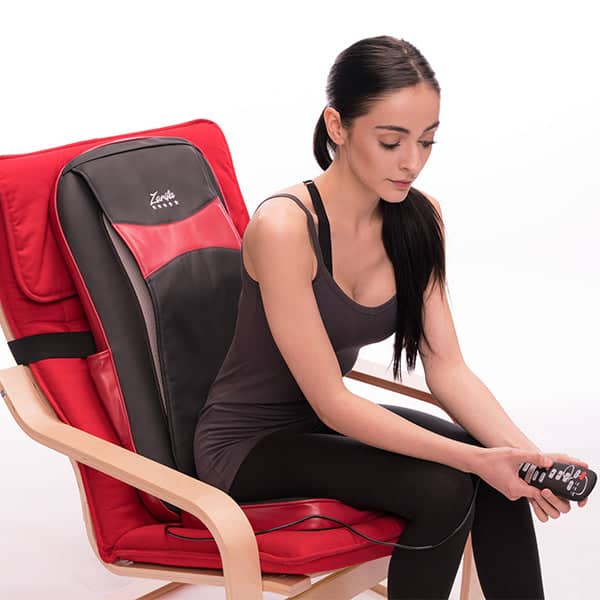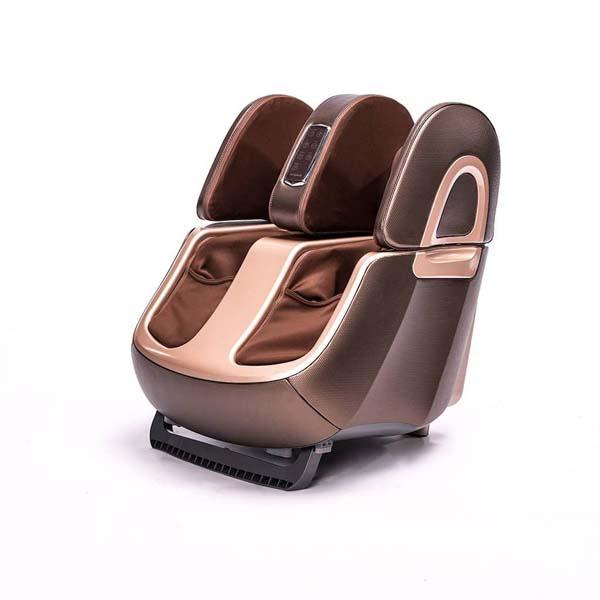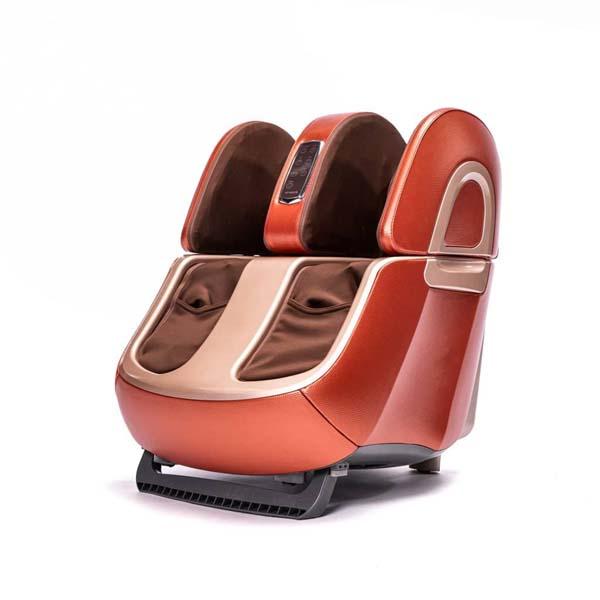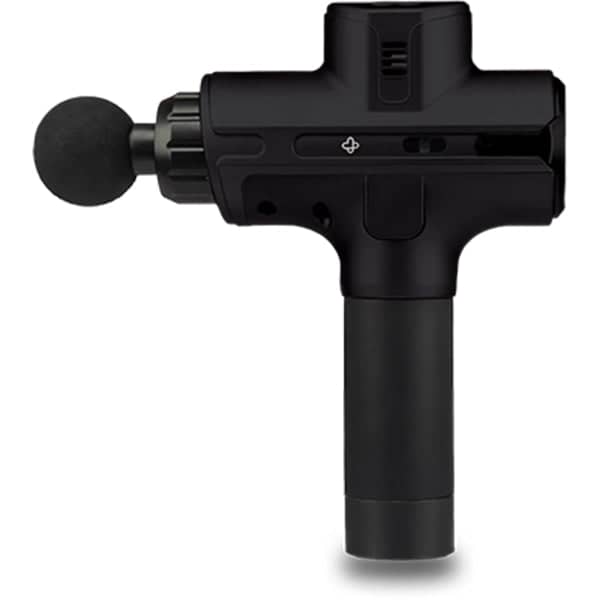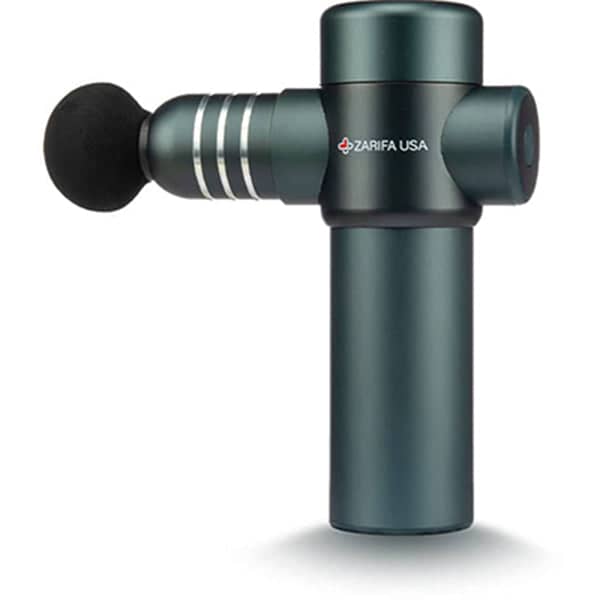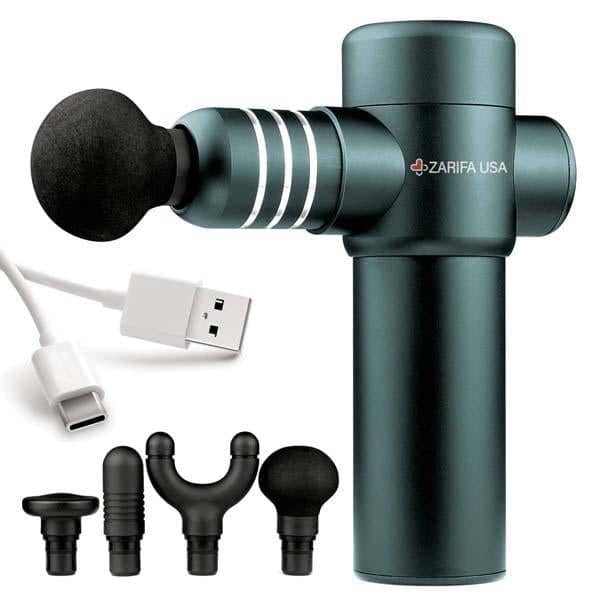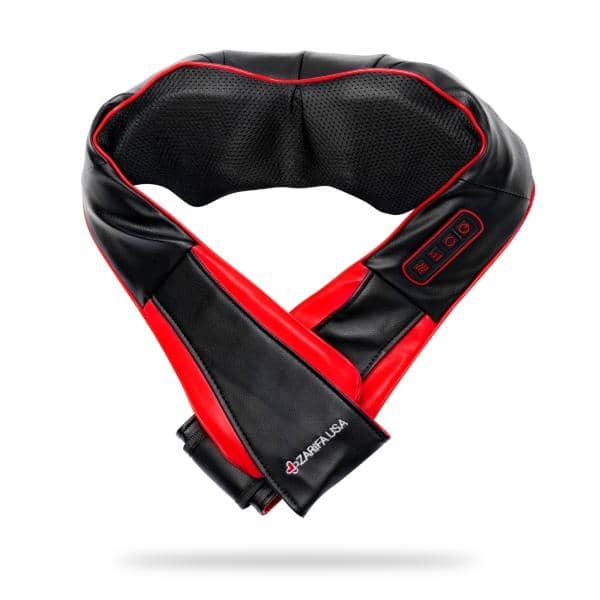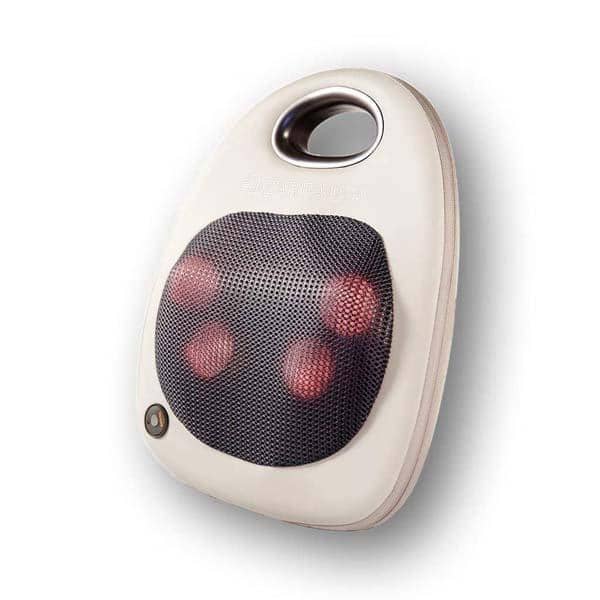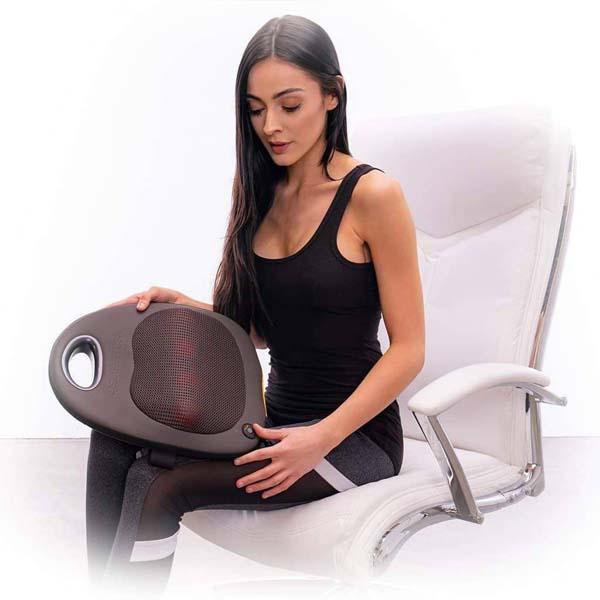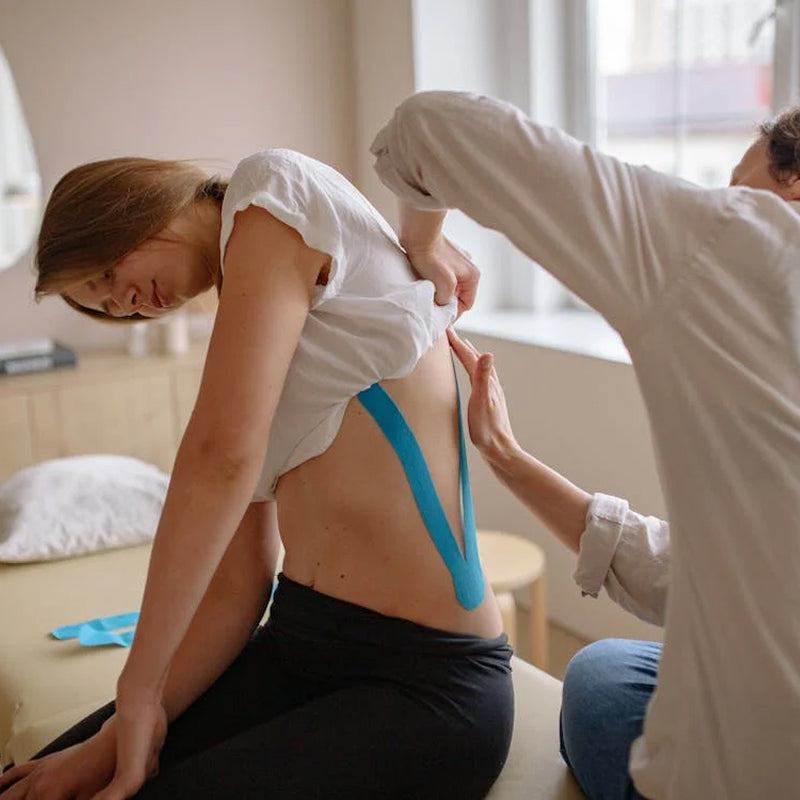Pain is the body’s natural response to something being wrong inside. Pain is an indication that a solution is needed and regardless of whether the pain is short-term or longer-lasting, the problem should be addressed. Pain that lasts months or years, with or without intermitted periods of no pain, and significantly impairs everyday functioning is classified as chronic pain. Chronic pain is a response by the body declaring that something needs to be treated.
As opposed to acute pain, chronic pain is not short-term. When a body suffers an injury, it undergoes acute pain that ends when the injury is healed. Acute pain is sudden and over time, it ends on its own, even if treatment is not sought. Chronic pain, on the other hand, is much longer-lasting. Those suffering chronic pain, like arthritis, back pain, headaches, migraines, cancer pain, etc. should seek treatment or therapy.
For Back Pain we recommended back massager
For Headaches and migraines we recommended eye massager
The American Academy of Pain Medicine reports that “an astonishing 100 million Americans suffer pain each year, with more than half of pain sufferers believe[ing] that they have little or no control over their pain.
The good news is, you’re more empowered than you might think to alleviate and even eliminate your pain.
Chronic Pain Therapies :
-
Physical Therapy :
Physical therapies involve a series of physical activities including stretching, pain-relief strategies, and strengthening, among others. These techniques are used to reduce chronic pain by involving the concerned muscles in a series of exercises.
-
Breathing Exercise :
Deep breathing exercises, meditation, yoga,, massage, and other such relaxation techniques can help ease the muscles involved and temporarily minimize pain experienced. Such exercises are usually a part of other treatment plans and help relax tense muscles, thereby reducing pain. These techniques are also known to enhance flexibility and strengthen muscles, making them less prone to pain.
-
Occupational Therapy :
Occupational therapy centers on how to go around the pain and engage in everyday activities in a way that minimizes the risk of intensifying chronic pain. For instance, someone who suffers from chronic back pain is recommended to avoid heavy weight lifting and how to posture the body when lifting weight is necessary.
-
Counselling :
Counselling is particularly effective if the chronic pain is psychogenic, i.e. associated with one’s mental state.
-
Biofeedback Training :
Biofeedback techniques focus on making people aware of their muscular tension, brain activity, heart rate, and temperature as a means of enhancing self-awareness and thereby controlling physical changes associated with pain. It helps people learn how to manage their emotional and physical pain
-
Exercise :
Frequent exercise of the concerned muscles is a part of any pain management plan for a patient of chronic pain. Tight muscles are the primary cause of chronic muscle pain ad relieving muscular tension is the main cure. Overuse of muscles, inflammation, or other such complications can cause muscular tension and regular exercise helps counter this by strengthening muscles, improving sleep, releasing endorphins, and enhancing joint flexibility.
-
Mind-Body Therapy :
These therapies focus on the power that the mind has on the symptoms in the body. Various techniques are taught to the subjects in order to give them greater control over their body. These include a series of therapies including relaxation, meditation, biofeedback, guided imagery, hypnosis, etc. to minimize bodily pain.
-
Visualization :
Visualization is a helpful strategy that helps alleviate pain by giving it a visual image and then minimizing that image in one’s mind. The therapist directs the patient to visualize the pain with shape, size, colour, and motion and then altering it until it is replaced with a smaller and more pleasing image.

Chronic Pain Treatment :
Alternatively, chronic pain ca be treated by a treatment plan implemented under the supervision of a trained professional who directs the patient through it. Some of the most commonly sought medical treatments for chronic pain include the following:
-
Prescription and non-prescription drug therapy :
Over-the-counter pain killers like Tylenol, aspirin, or ibuprofen can help relieve pain. These drugs can relieve muscle pain, aches, and stiffness, while nonsteroidal anti-inflammatory drugs also minimize inflammation (both irritation and swelling). Alternatively to medicines to be ingested, topic pain relievers including lotions, creams, or sprays can also be used to reduce pain in sore muscles.
If over-the-counter medicines are ineffective, you may be prescribed muscle relaxants, strong painkillers, anti-anxiety drugs, or antidepressants. -
Trigger-point injections :
Certain areas of muscles may develop trigger points or knots if they do not stay relaxed. Trigger point injections are used to treat these areas of muscles. It involved the use of small needles to inject local anaesthetics into the trigger points. This inactivates the trigger points, thereby relieving pain. Trigger point injections are most commonly used to treat arm, leg, neck, and lower-back muscular pain. It is also effective in treating fibromyalgia, myofascial pain, and tension headaches.
-
Bioelectric therapy :
Bioelectric therapy is used to block pain messages from reaching the brain. It also induces the release of endorphins that act as pain blockers by blocking pain messages to the brain. Bioelectric therapy is particularly useful with chronic and acute pain in the back and muscles, migraines, headaches, TMJ disorders, and scleroderma.
-
Acupuncture :
Acupuncture include uses small needles in various acupoints near nerves associated with pain. Doing so relieves pain by triggering the release of endorphins that act as pain blockers. The nerves at the acupoints, when activated, cause dull aces, and triggering endorphin release here can minimize these pains. In most cases, acupuncture is used in combination with other treatments for headaches, back pain, tennis elbow, menstrual cramps, and osteoarthritis, among others.
-
Surgical implants :
In cases when standard medication and therapy are ineffective, surgical implants may be necessary. These are usually used only as a last resort for treating chronic pain and include the following two types of surgical implants:
-
Intrathecal drug delivery :
This procedure, also referred to as the spinal drug delivery system, includes making a pocket under the skin to hold an inch-thick medical pump. A catheter is also inserted to carry the pain medicine to the intrathecal space around the spinal cord. The spinal cord is responsible for the transfer of pain messages and inserting the medication here blocks pain messages. The implants carry certain medicines like morphine or muscle relaxants to the spinal cord.
-
Spinal cord stimulation implants :
This method involved sending low-level electric signals to the spinal cord to block pain messages. This method is most effective with limb and back pain.
-
Intrathecal drug delivery :
-
TENS or massage therapy :
Zarifa devices including TENS/EMS use a combination of Transcutaneous Electric Nerve Stimulation with muscle stimulation to give a very effective treatment strategy.
Chronic pain is more problematic than simple acute pain and treatment should be sought. There are several different options but it is best to consult your therapist for the most effective choice for you.

Their portability and stylish form factor are just an added bonus.

